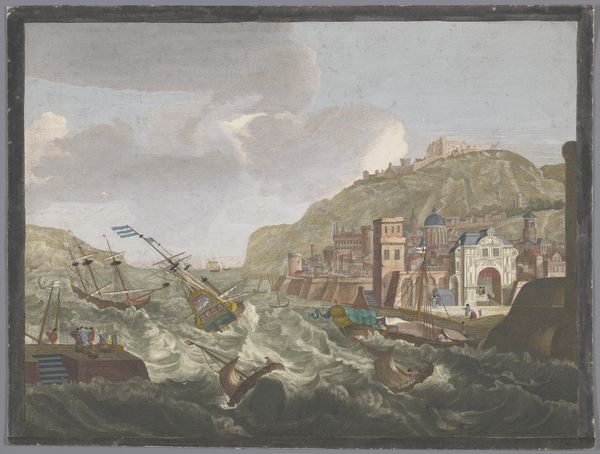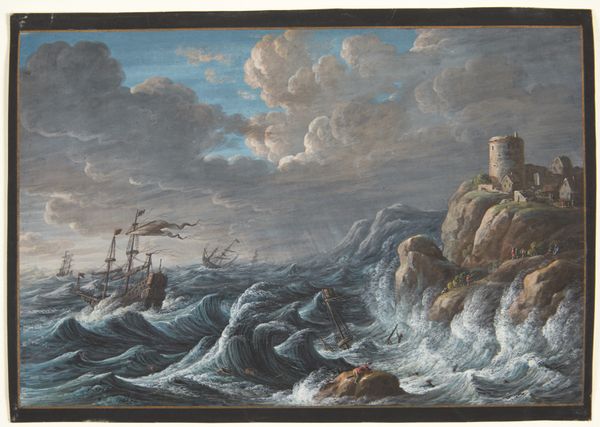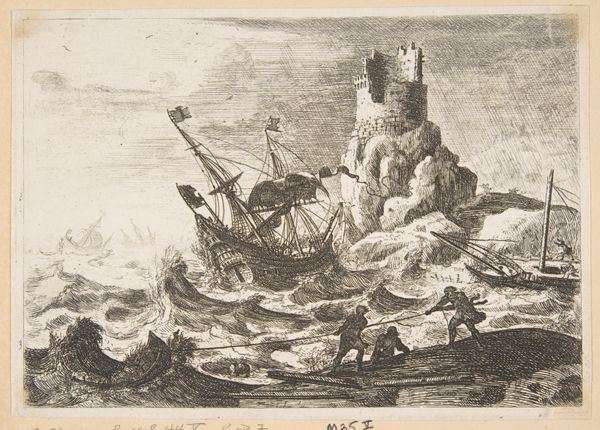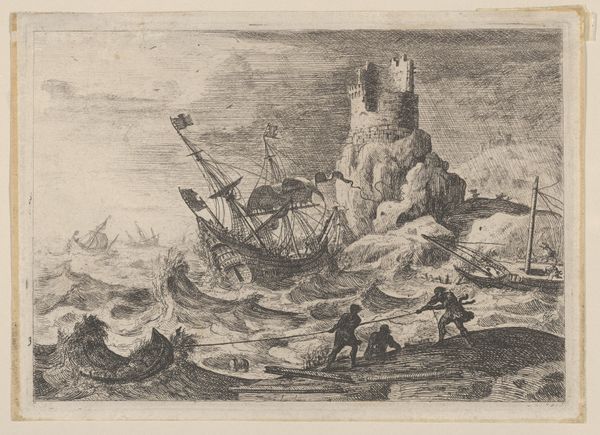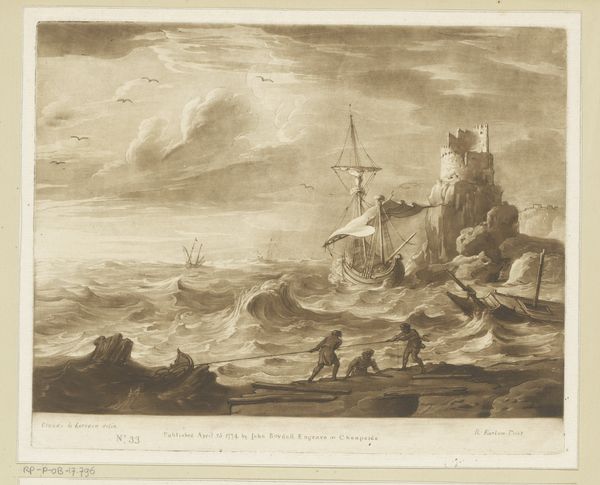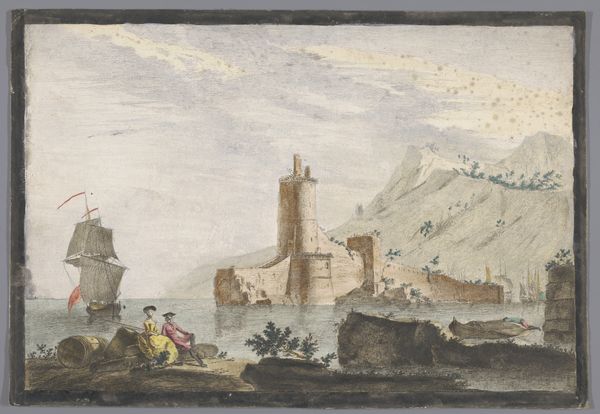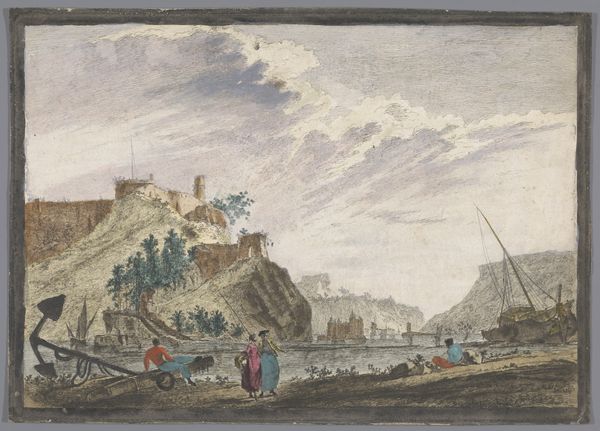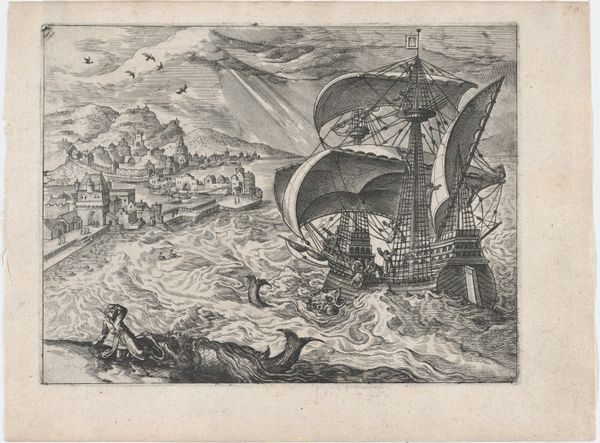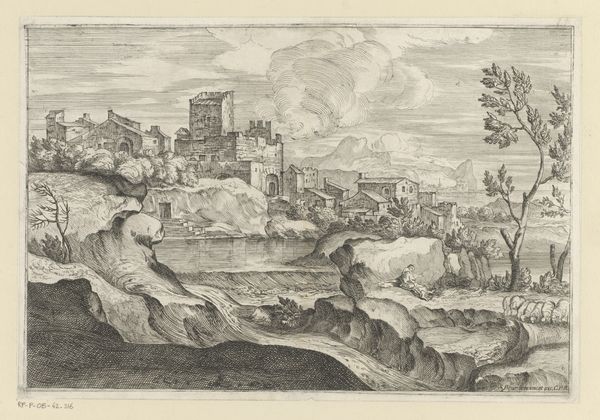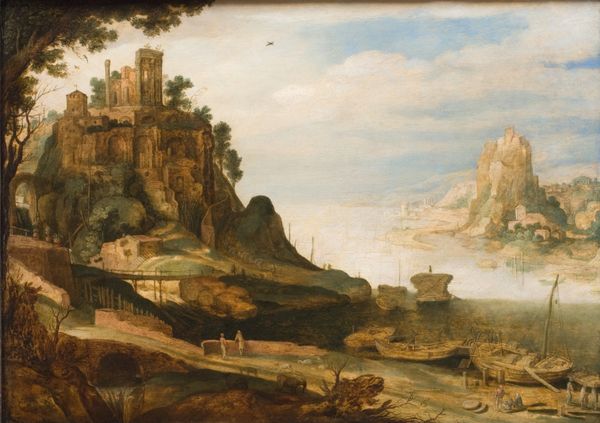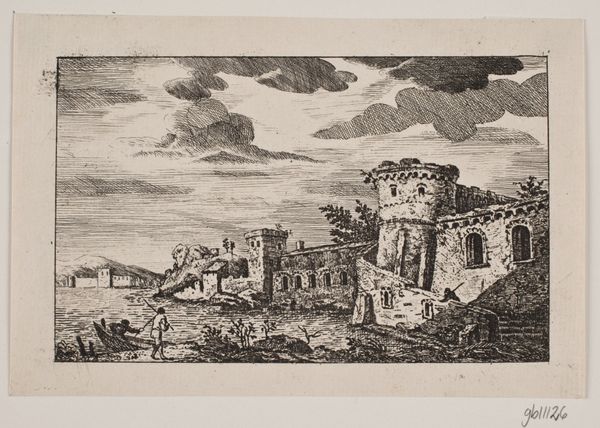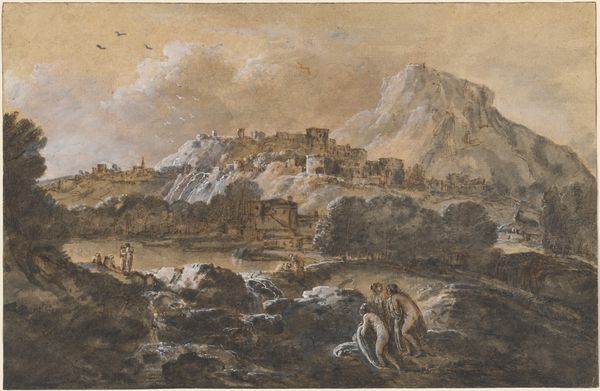
drawing, watercolor
#
drawing
#
landscape
#
watercolor
#
coloured pencil
#
cityscape
#
genre-painting
#
academic-art
#
mixed media
#
watercolor
Dimensions: height 326 mm, width 433 mm
Copyright: Rijks Museum: Open Domain
Curator: Let's spend some time with this 18th-century watercolor and drawing, “Gezicht op een kust met schepen en boten op de klippen te Noorwegen”—or, “View of a coast with ships and boats on the rocks in Norway." Editor: Oh, it's immediate, isn't it? I see chaos rendered with the most delicate hand. There's this captivating tension between disaster and almost cheerful execution. It's like watching a storm through a lace curtain. Curator: Exactly! The piece captures a shipwreck with remarkable detail. You can see the figures scrambling on the shore, salvaging what they can while this medieval looking cityscape looms above, seemingly indifferent to the maritime drama unfolding. Editor: And that flag atop the ship! It’s a detail that speaks volumes, hinting at colonial trade routes, perhaps. I wonder what lives, and what injustices, were carried on that ship. Its violent end there is...poetic, maybe? Though, obviously, materially tragic for those aboard. Curator: It’s tempting to imagine stories woven into those waves. What social dynamics were at play, both on that doomed vessel and within the settlement watching it all unfold? And there's something undeniably picturesque about this scene of human struggle set against a romantic backdrop. Editor: Oh, completely! Look at the light, too. That slightly diffused luminosity feels characteristic of 18th-century sensibilities—beauty even in catastrophe. But, yes, situating this piece within a history of maritime colonialism adds another layer. This isn’t just about the sublime; it's about power, trade, and the inherent risks those things imposed, particularly on marginalized populations. Who paid for the shipwreck? Who benefitted from the salvage? Curator: Precisely. The way the waves crash seems to amplify the sense of peril but also the cyclical nature of such events. Coastal communities were all too familiar with such disasters. The work beautifully blends topographical accuracy with an almost theatrical staging of human drama. Editor: Agreed. It’s a complex tableau. It whispers of adventure, disaster, resilience, and exploitation—a small, intricate window into a much wider world, a world built on inequality and the unforgiving power of nature. Curator: And maybe it holds a mirror up to our own fascination with spectacle and suffering, then and now. Editor: Precisely. It’s a sobering, though visually stunning, reminder of how interconnected we are to the past, and the sea.
Comments
No comments
Be the first to comment and join the conversation on the ultimate creative platform.
